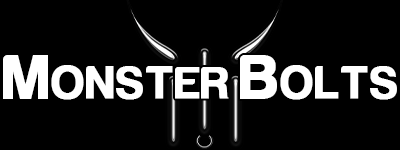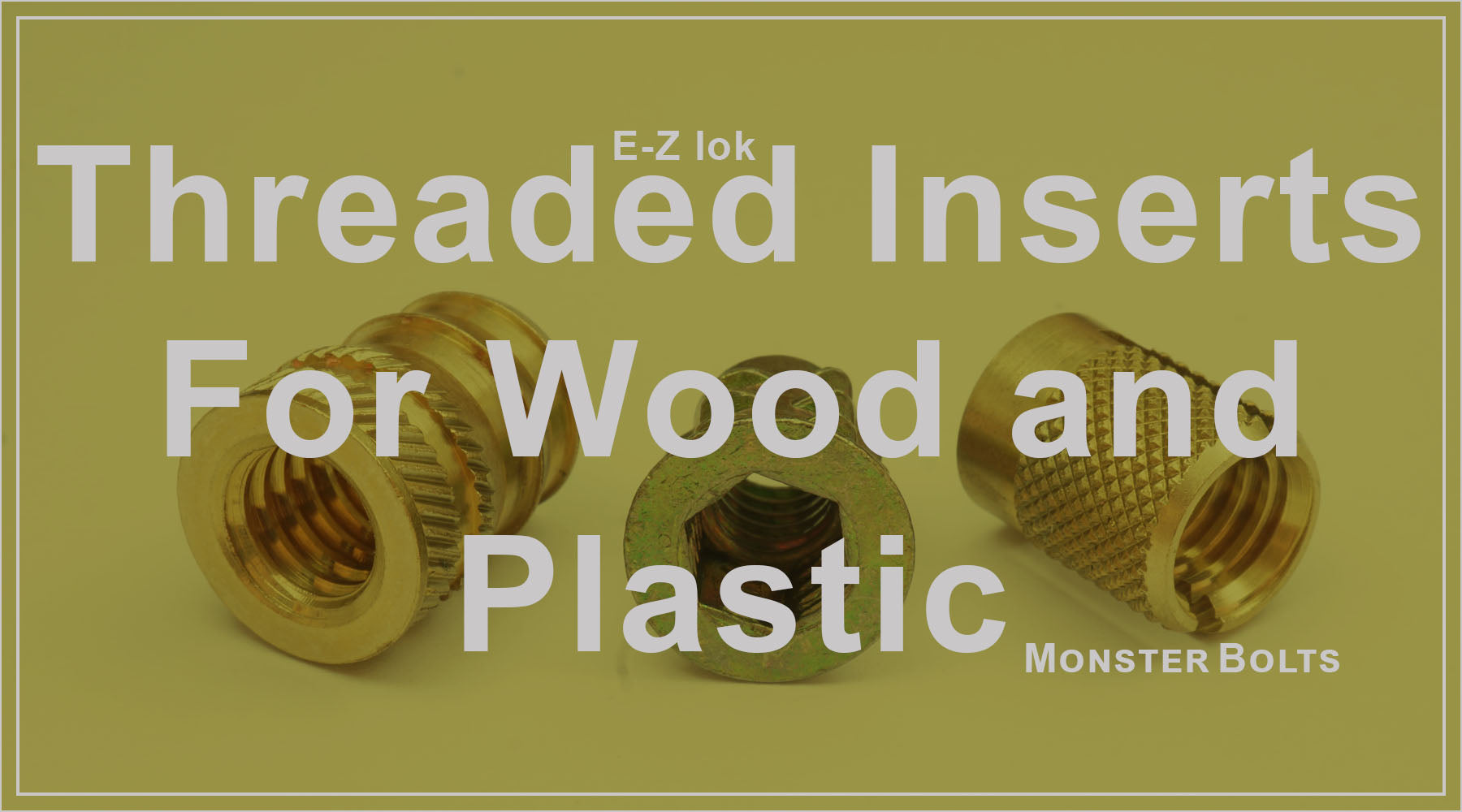Threaded Inserts for Wood & Plastic: Types, Installation & FAQs
Quick Answer: Threaded inserts create strong, reusable machine threads in materials that don’t hold threads well (wood, plastics, thin metals). Use flanged/self-tapping inserts in wood, and press-in / heat-set / ultrasonic inserts in plastics. Match the insert style to your base material, drill the correct pilot, and install with steady alignment for the best pull-out strength.
Monster Bolts stocks E-Z Hex flanged inserts for wood and E-Z Press / ultrasonic inserts for plastics, plus other insert styles for repairs and high-cycle assemblies.
Threaded Inserts for Wood
E-Z Hex Flanged Inserts (Wood)
Why use them
- Superior holding power in softwoods/hardwoods vs wood screws
- Reusable threads for assemblies you’ll service repeatedly
- Load distribution via a flange that protects the surface
- Clean, pro finish for cabinetry, furniture, fixtures
How to install
- Drill pilot: Use the recommended pilot for the insert size and wood species.
- Drive insert: Use a hex/Allen key to screw the insert in straight; stop flush.
- Fasten: Thread your machine screw/bolt into the insert.
Tip: In end-grain or very soft woods, consider epoxy bedding for extra pull-out resistance.
Threaded Inserts for Plastic
E-Z Press Inserts (Thermoplastics)
- Quick install: Press into a properly sized hole
- Strong hold: Knurls/barbs grip the plastic
- Versatile: Great for many common thermoplastics
Install (press-in)
- Drill/ream the hole to insert spec
- Press the insert flush (arbor press preferred)
- Thread your fastener
E-Z Sonic / Ultrasonic Inserts
- Thermal/ultrasonic install: Insert melts into the boss for a fused fit
- High pull-out: Excellent for enclosures & high-cycle joints
- Precision: Repeatable alignment and depth
Install (ultrasonic / heat-set)
- Pre-drill boss to spec
- Position insert; apply ultrasonic horn or controlled heat
- Allow to cool/set before loading
Choosing between press-in vs heat-set/ultrasonic depends on plastic type, cycle time, boss geometry, and strength requirements.
Insert Types (Overview)
| Type | Best For | Install Method | Key Advantages |
|---|---|---|---|
| Self-tapping (wood/soft metal) | Wood furniture, jigs, soft metals | Screw/drive into pilot | Fast install, strong reusable threads |
| Flanged (E-Z Hex) | Wood where surface protection matters | Hex drive into pilot, stop flush | Even load spread; resists pull-through |
| Press-in (brass) | Thermoplastics, light-medium duty | Press to depth | Fast, no heat; good grip with knurls |
| Heat-set | Thermoplastics requiring strong bond | Heated tip; melt & set | High pull-out; repairable bosses |
| Ultrasonic | Production plastic assemblies | Ultrasonic welder | Very consistent; excellent strength |
| Helical inserts (wire) | Metal thread repair / reinforcement | Tap hole, install with tool | Restores damaged threads; wear-resistant |
Installation Tips & Best Practices
- Pilot accuracy: Use the manufacturer-recommended pilot/boss size by material. Too small = cracking; too large = poor grip.
- Alignment: Keep inserts square to the surface to avoid cross-threading and uneven load.
- Torque control: Don’t overdrive; stop when flange is flush (wood) or depth is reached (plastic).
- Adhesives (optional): In wood end-grain or repaired holes, epoxy bedding can significantly increase pull-out.
- Service cycles: For high on/off cycles, choose metal inserts and machine screws with proper lubrication if needed.
Frequently Asked Questions
Are threaded inserts stronger than screws?
Often, yes—especially in wood and plastics. Inserts spread load and provide durable machine threads for repeated service.
How are threaded inserts installed?
Depends on the style: self-tapping/wood inserts screw into a pilot; press-ins are pressed; heat-set and ultrasonic are thermally installed; helical inserts require tapping and a driver tool.
Can I reuse threaded inserts?
Usually. The insert stays in the base material while the machine screw is removed/reinstalled. Replace damaged inserts; avoid over-torquing into plastics.
Which insert should I use in plastic?
Press-ins are fast for many thermoplastics; heat-set/ultrasonic offer higher pull-out and durability in production assemblies.
Which insert should I use in wood?
Self-tapping or flanged wood inserts (like E-Z Hex) provide strong, reusable threads. Use proper pilots and go in straight.
Shop Threaded Inserts
- E-Z Hex Flanged Inserts for Wood
- E-Z Press / Brass Press-In Inserts (Plastic)
- All Threaded Inserts (EZ-Lok)
Need help choosing? Call (850) 764-2658 or email support@MonsterBolts.com — we’re happy to help.

